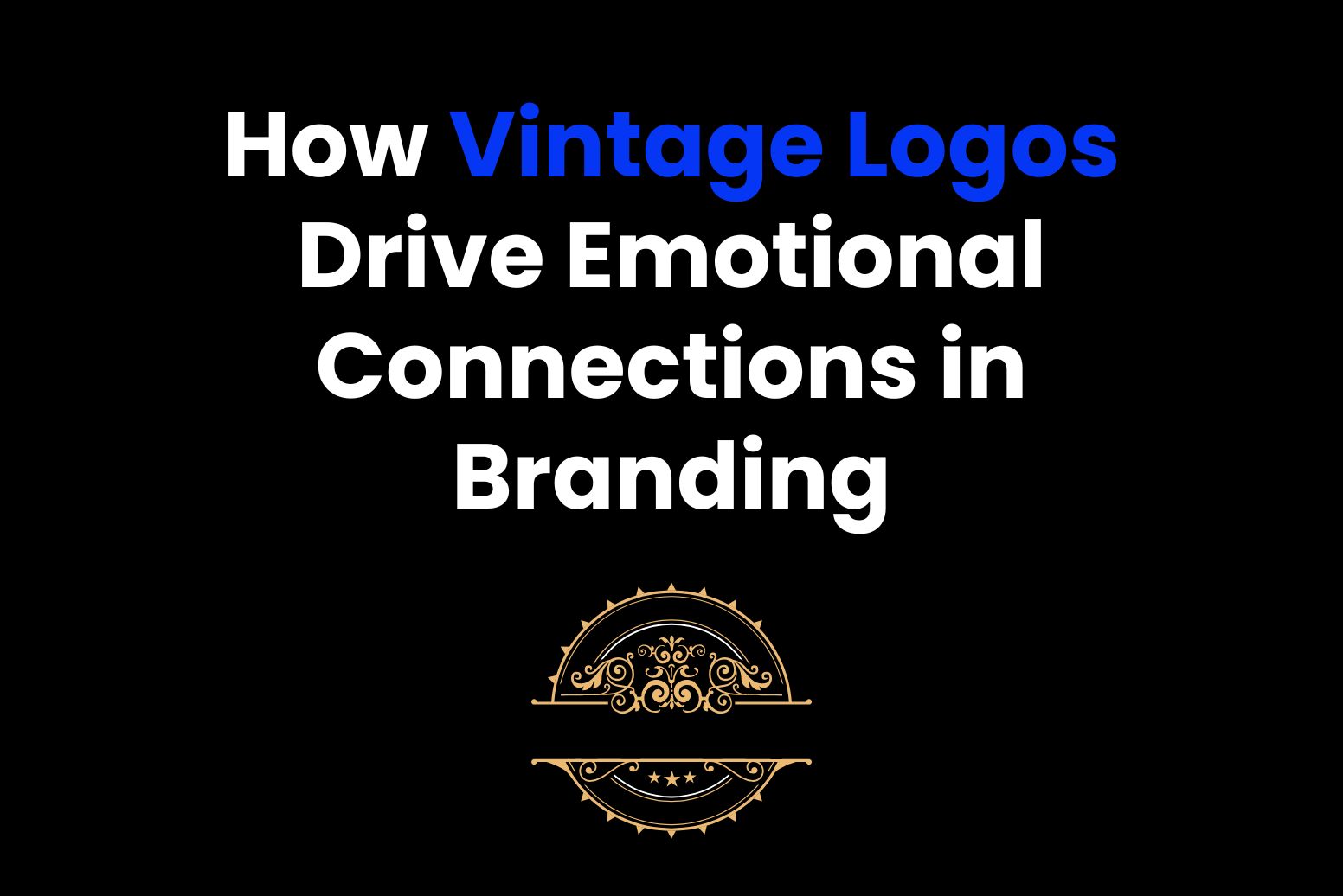Today, vintage logos are going places. In a world that changes every day and lives every moment, brands look toward the past to find emotive connections with the market. The blending of the past and modern branding strategy into an artistic formula is what provides them with lasting impressions. With nostalgic sentiments evoked by vintage logos, people are bound to easily love what it can bring to their memory – making it a golden standard for companies seeking branding opportunities to gain trust and recognition. In this report, we will delve deeper into what makes a logo vintage, why they are widely embraced today, and in which industries are the flagbearers of vintage branding design for success.
Part 1: What Defines a Vintage Logo?
A vintage logo represents not just a stylish element of the decoration but history, culture, and timelessness; often, the elements that make up the design allow these logos to be able to bridge the gap into the new world and take one back to the good old days. Let’s break down unique features that define vintage logos below:
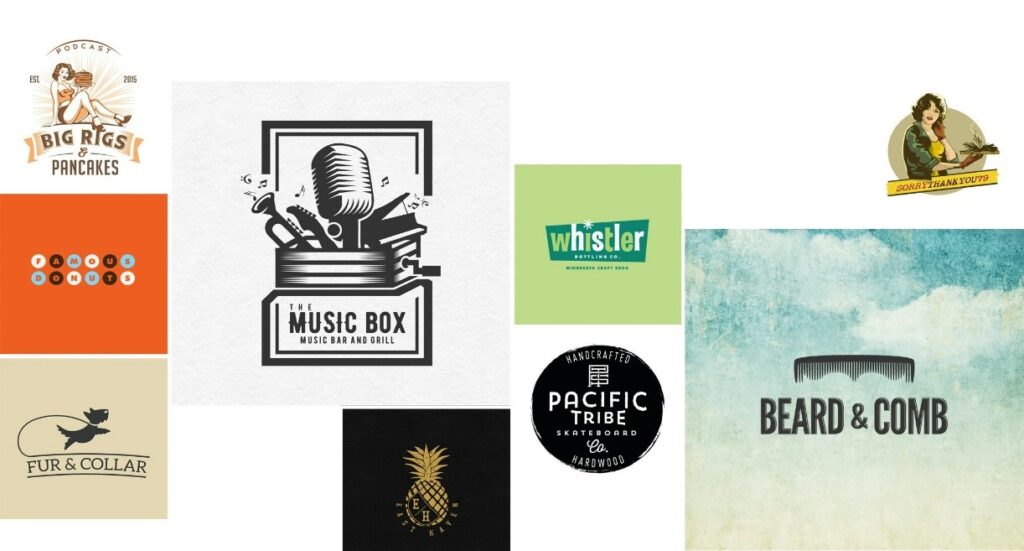
Retro Fonts
Retro fonts are one of the characteristics that best define vintage logos. These fonts often have a distinctive style that points back into earlier decades, usually around the mid-20th century. Whether bold, hand-written script or clean, geometric sans-serif, these types of fonts scream nostalgia directly. Vintage logo fonts very often feature serifs, rounded edges, and decorative details – all common traits of a bygone design era. Here the Neon Colors: You Need to Know About This Vibrant Trend. These fonts are authentic and artisanal, which appeals to consumers who seek reliable and dependable brands.
Dull Colors
Modern logos are often bright and vibrant, but vintage logos are more muted or faded. Think earthy tones, pastels, or slightly desaturated hues that give the impression of age and familiarity. These colors are comfortable and warm and reinforce the Consumer perception that the brand has deep history and an old time appearance. For example, muted yellows, browns, and reds were common in logos from the 1950s and 1960s, and their use today adds an authentic retro feel. Blue Logos: Choose the Perfect Logo Color for Your Business.
Timeless Imagery
Vintage logos often feature timeless imagery related to universal symbols, like badges, shields, crests, and simple icons. These elements evoke a sense of reliability and tradition, and customers want stability. Images that suggest long-standing heritage are common in vintage logos; for example, old-school typography or symbols associated with craftsmanship and quality. This timeless imagery connects consumers on a deeper level, giving them the feeling that the brand is part of something bigger and enduring.
Part 2: Popular Types of vintage Logos
Old logos have several styles that are highly prized for their nostalgic feel and timeless appeal. It has allowed brands to develop unique identities that appeal to an audience looking for authenticity and heritage. You must learn about the 3D Text Effect Logo Design: Tips and Tools to Get Started. Listed below are some of the most popular types of vintage logos. Here are some of the most popular types of vintage logos:
Emblem logos:
Trademark styles most iconic in vintage design often possess forms reminiscent of badges, crests, or shields. Usually, they have a symbolic feel and authority. Ornate details, symmetrical composition, and strong display typography are typical features associated with these logos, plus sometimes banners, laurels, or scrollwork; they are very popular, especially among schools, breweries, and sports teams with a message of heritage, trustworthiness, etc.
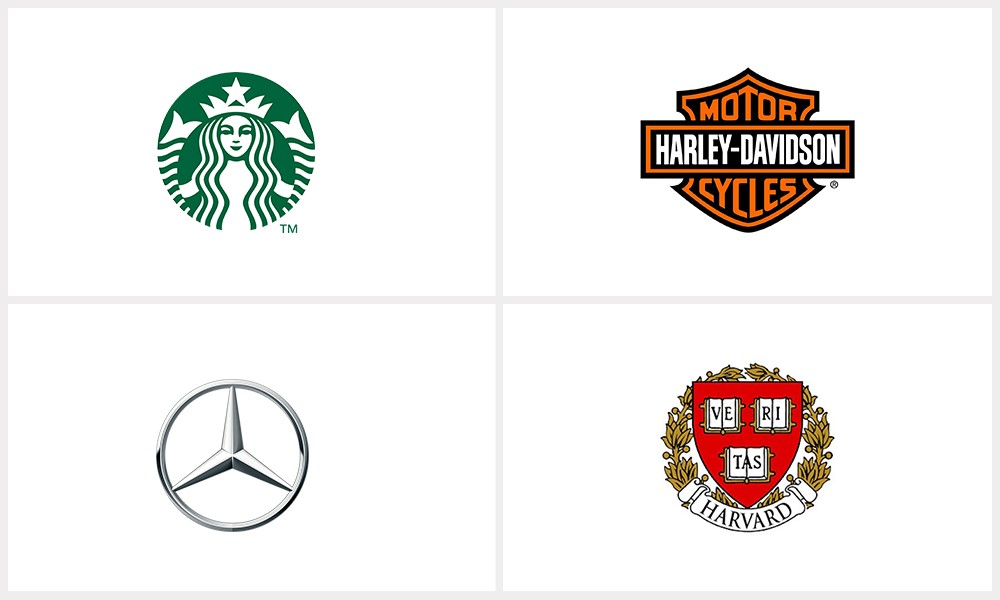
Handmade Designs
Handcrafted vintage logos tend to be authentic, as they seem to be hand-crafted. These designs contain irregular lines, textured effects, and organic shapes that convey a personal touch. Hand-drawn illustrations or brushstroke typography often define these logos, which makes them perfect for artisan brands like handmade goods, coffee roasters, and boutique shops where uniqueness is key.
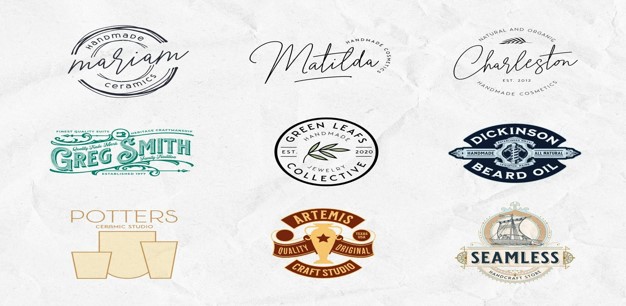
Typographic Logos:
Typographic logos rely heavily on retro fonts to tell a brand’s story. With fonts as the centerpiece, these logos often include decorative details like swashes, shadows, or distressed textures. Whether it’s a serif, script, or bold sans-serif font, this style is ideal for fashion and restaurants, among others, where typography may call forth certain eras or moods.
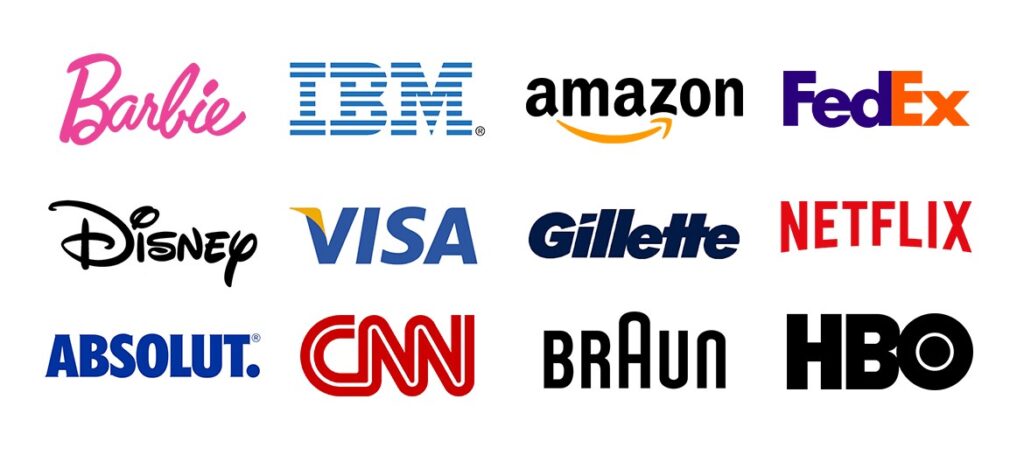
Muted Color Palettes:
Muted color palettes are standard in vintage logos, creating a retro aesthetic with warm, earthy tones. Colors such as mustard yellow, olive green, and faded blue work well to create a sense of nostalgia that pairs with other elements of vintage designs. Because the versatility of such palettes makes them cross-industry applicable, evoking the trust and familiarity in hospitality to outdoor gear companies.

Part 3: Why Are Vintage Logos Popular Today?
Vintage logos aren’t something everyone can get away with, but for many good reasons, they’re making a comeback. At a time when the customer is information-overloaded and faced with choices, brands seek nostalgia as a way to forge an enduring emotional connection. Here are some of the key factors that explain why vintage logos are popular today.
Building Emotional Connections
The first reason vintage logos work is that they are emotion-building among consumers. Nostalgia has a more potent influence on human emotions and can be leveraged upon when brands connect with them; therefore, it goes a bit deeper with the target audience. A vintage logo helps the consumer recall a simple era or link with a period in time that they would find more authentic and reliable. This emotional connection is extremely important for building brand loyalty because consumers are more likely to support brands that resonate well with them on a personal basis.
Relaying Trust and Authenticity
Authenticity is the prized commodity in today’s world, and this is why vintage logos speak trustworthiness. A company, through its choice of retro design, is signaling its rich history or at least deep appreciation for the past. Consumers tend to associate these designs with quality craftsmanship and service dependability. These are crucial in food and beverage industries, as consumers decide whether to purchase a certain product based on trust and reliability.
Appeal to Nostalgia
Nostalgia is an effective for people looking back on the past, vintage logos tap into this desire for simpler, more familiar times. Whether it’s a 1950s or a 1970s throwback, the use of nostalgic elements in branding can make a brand seem to have a more relatable, timeless quality. This appeal to nostalgia is quite effective in front of Millennial and Gen X consumers, because vintage designs depict authenticity and heritage.
Stronger Brand Recognition
Because vintage logos often feature unique, memorable design elements, they tend to be more attention grabbing than modern, minimalist logos. Such brands become instantly recognizable because the logo has bold, retro fonts and nostalgic color schemes used in it. From a sea of generic sleek logos, vintage logos really stand out and create an impact.
Part 4: Popular Industries Using Vintage Logos
The nostalgic value has seen vintage logos gain immense traction in different sectors of industries. Each of these has leveraged the retro feel to develop unique and iconic brand identities. Here are the industries where vintage logos have taken a good chunk, their descriptions, and examples of how such designs benefit their branding:
Cafes and Diners: Creating a Cozy and Nostalgic Vibe
Old logos are very common for cafes and diners to try to bring warmth and a sense of comfort. Such places often tend to make an atmosphere which would be like mid-century America when diners used to be the heart of the community. The nostalgic feel of this can be perfectly communicated with vintage designs.
Design Elements:
- Fonts resembling signage from the 1950s and 1960s.
- Soft yellows, blues, and reds in muted or pastel tones.
- Imagery such as coffee cups, pancakes, or checkered patterns.
Benefits:
- Establish repeat client by fostering a sense of comfort.
- Positions the brand over time by associating the brand with classic, nostalgia-worthy dining.
Craft Breweries and Bars: An Old-World Revival
Craft breweries and bars adopted vintage logos that aimed to project authenticity and handmade craftsmanship. These logos show lineage associated with brewing tradition, linking these contemporaries to age-old brewing technologies and aesthetic.
Design elements:
- Sophisticated font with serifs or handmade hand scripts.
- Barrels, hops and beer mugs, a few illustrations.
- Earthy mutes browns, green, gold.
Benefits:
- Brands become of artisanal and premium level.
- Unique handcrafted appealing to consumers.
- It is always exclusive and traditional.
Fashion and Accessories: Reiterating Legacy and Style
The fashion and accessories sector makes uses of old logos for adding elegance, heritage, as well as timeless appeal of the brands. Most of such logos express a long heritage of the brand or what inspired them from previous decades.
Design Elements:
- Minimalist or ornate typography with inspiration from vintage fashion catalogs.
- Symbols include laurel wreaths, sewing machines, or silhouettes from yesteryear.
- Black, white, or gold tones for a classic and classy look.
Benefits:
- Appeals to customers who believe that timeless style is better than trendy fads.
- This enhances the perception of quality and exclusivity.
- Storytelling is enhanced as it links the brand to historical elegance.
Creative Agencies: Bold yet Timeless Aesthetics
A lot of creative agencies use vintage logos that give them the look and feel of being artistic yet very professional and reliable. Agencies distinguish themselves by using old-world charm with modern creativity using such logos.
Design Elements:
- Bold, unique typography that features intricate details.
- Abstract or symbolic imagery such as quills, cameras, or geometric patterns.
- Muted yet striking color palette: deep blues or burgundy.
Benefits:
- Exemplifies creativity and innovation through unique designs.
- Communicates reliability and artistic richness.
- Grab the attention in an extremely competitive market by being differentiated through looks.
Part 5: How to Create Your Own Vintage Logo
Making a vintage logo requires the right strategy of design elements, giving it a nostalgic appeal and yet fitting in your brand’s identity. Here are actionable steps to craft an effective logo.
Know Your Target Group’s Values and Preferences
Start with what really speaks to your target audience.It could be nostalgia love, heritage appreciation, or an authenticity need. Whatever it is, knowing that will be important. Find out the design styles and themes that appeal to your audience as trustworthy and relatable and use those as guidelines in your logo creation.
Define Your Brand Story
A strong brand story forms the foundation of any effective vintage logo. Reflect on what values, traditions, or historical elements best define your brand. Questions such as which periods match your message or symbols can be most in-line with your heritage are ideal questions to pose. Try integrating these themes into your design to ensure that the logos not only appeal but are also meaningful emotionally.
Vintage Fonts, Color Schemes, Icons
Choosing the appropriate design elements will make your design authentic and vintage. Incorporate old typography, which is serif or script type, to add a touch of nostalgia. Use dull, earthy color palettes that create warmth and familiarity. Add classic symbols like badges, crests, or hand-drawn illustrations that complement the vintage theme and make your logo memorable.
Keep the Design Balanced for Versatility
Vintage logos usually contain a lot of details, but at the same time, maintaining balance is very important in terms of clarity and versatility. Make sure your logo is not too cluttered and that typography, imagery, and colors work together. Test your design in various sizes and formats to ensure it remains effective in all mediums, from print to digital.
Part 7: Arvin AI: Your Ultimate Tool for Designing Stunning Vintage Logos
Arvin AI no longer makes the design of a vintage logo, which reflects the nostalgic value and timeless appeal, seem like a challenge. It is a smart, intuitive tool that makes the logo creation process much easier and allows you to design professional-grade vintage logos easily. Whether you are an experienced designer or just getting into branding, Arvin AI offers a seamless experience where creativity and functionality go hand in hand.
key Features of Arvin AI
Arvin AI is one of the powerful logo design platforms, and it has been very robust for vintage aesthetics. The following are some of the top features:
- AI-Powered Customization: The smart algorithms that adapt to your brand’s unique needs.
- Unique Templates: Variety of pre-designed, retro-inspired logo templates.
- Retro Design Options: Fonts, colors, and elements specifically curated for vintage styles.
- User-Friendly Interface: It simplifies the design process for both beginners and professionals.
- High-Quality Output: Download logos in professional-grade formats for versatile use.
Steps to Use Arvin AI to Create a Vintage-Inspired Logo
Step 1: Visit the Arvin AI Website
Open up your browser and head on to Arvin Logo Maker to begin designing a special logo with a vintage look or make an existing logo transparent.
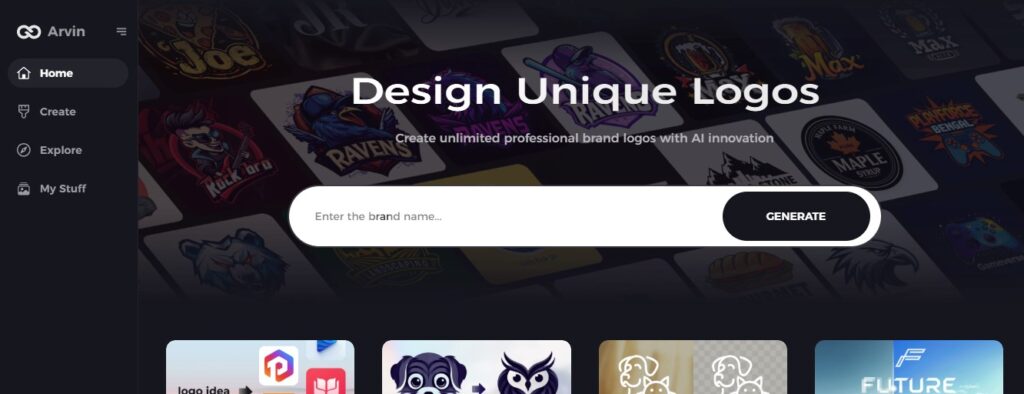
Step 2: Enter Your Company Details
Give me your company name and category. You can also let me know if you want a transparent logo. This information will enable the AI to create designs that fit the essence of your brand.
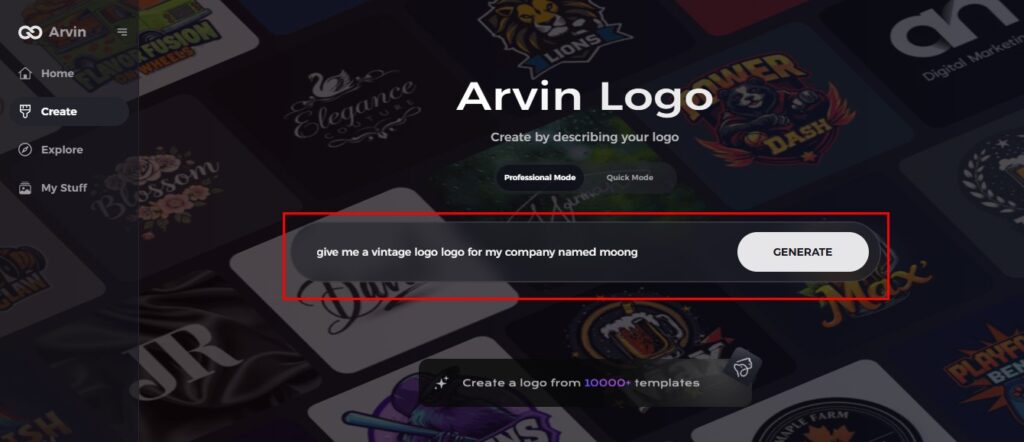
Step 3: Choose Your Industry
Choose the industry that best describes your business. This way, the AI will align its designs with your niche, and the logos it creates will reflect your brand’s core values and vintage appeal.
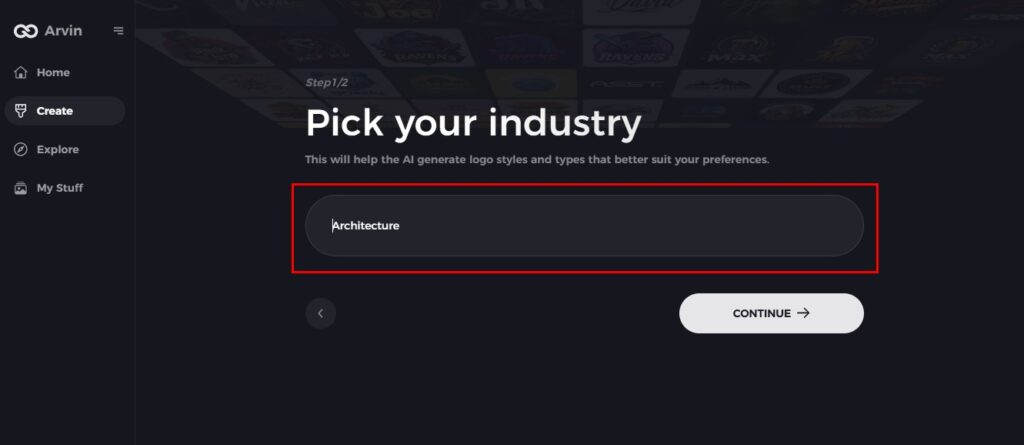
Step 4: Choose a Design Style
Choose a style that resonates with your vision. If you want to be surprised, then select the vintage style. The chosen style will guide the AI in creating a logo that matches your brand’s nostalgic and emotional connection goals.
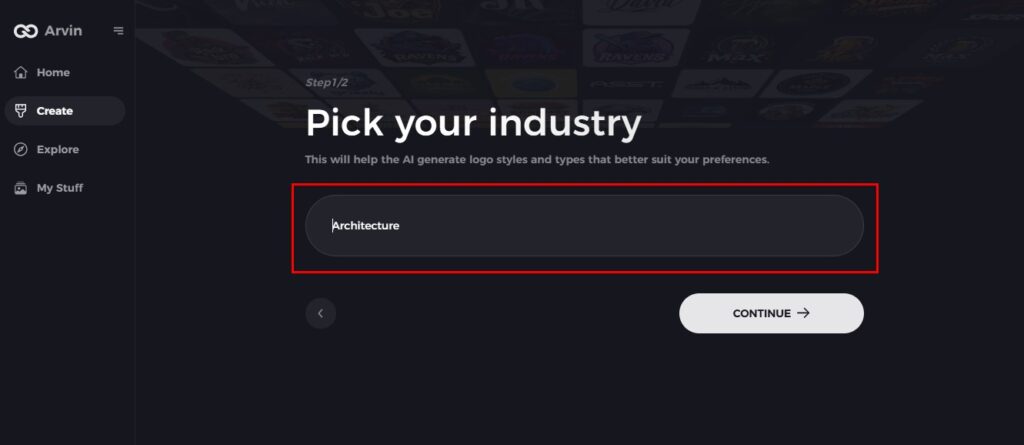
Step 5: Review Logo Concepts
Arvin AI will come up with multiple concepts for vintage logos based on the information that you will provide. From there, browse through all these ideas and pick out the one that best defines your brand.
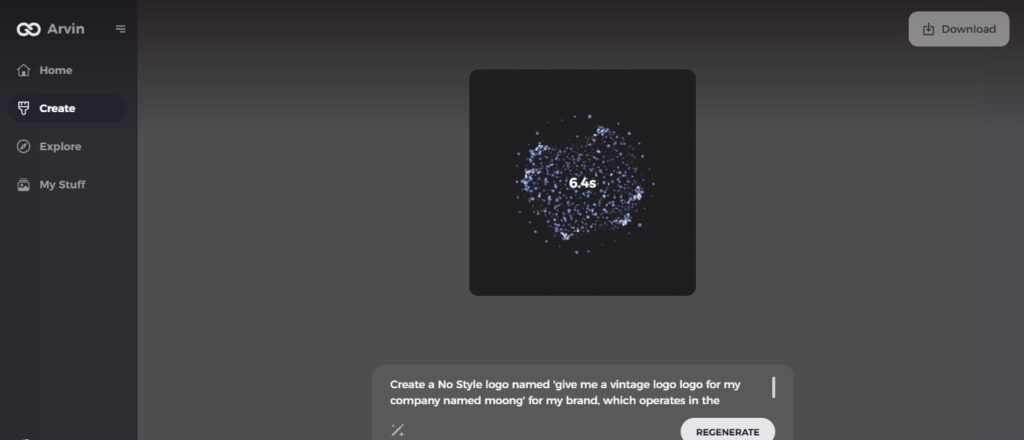
Step 6: Finalize Your Logo
Take your selected logo and play around with different colors, fonts, and icons to perfect the vintage look of the logo. This finalizes the output in terms of both the visual appeal and personality for your brand.
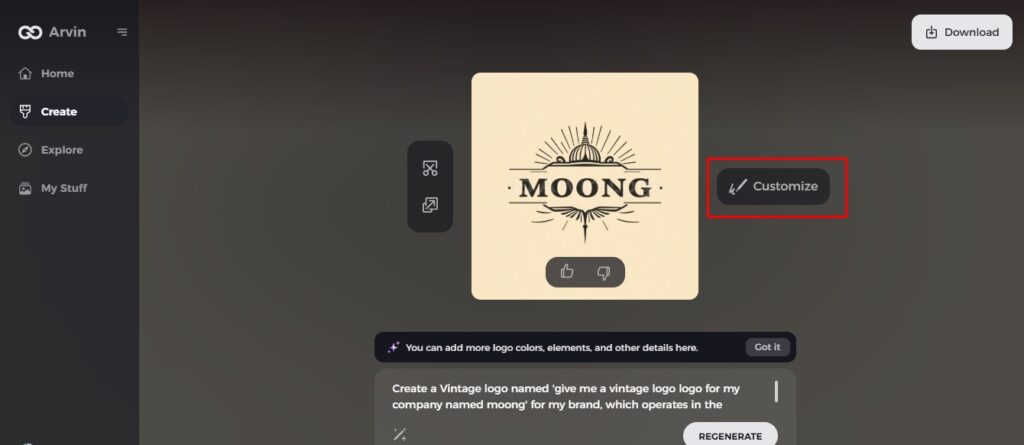
Step 7: Download Your Logo
After finalizing the design, download your logo in versatile formats such as PNG or SVG. These formats are perfect for use across websites, social media, print, and more, ensuring your vintage-inspired branding looks professional on every platform.
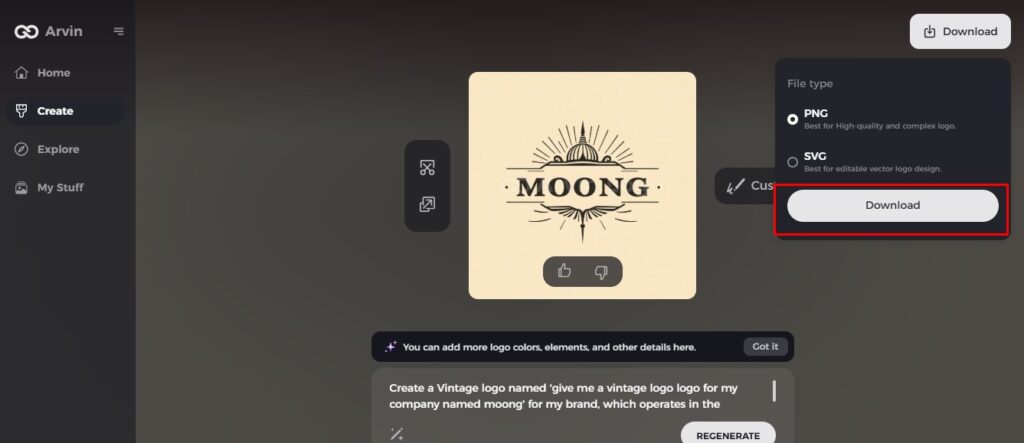
Part 8: How Vintage Logos Influence Modern Branding
Vintage logos add a different kind of flavor to this minimalist design era, when a dash of old time charm can be blended with the best modern branding. Those brands which have gained success through their vintage style, it has become distinctive from the rest.
The Blend of Tradition and Innovation
Vintage logos are not just about old times; they create a perfect balance between tradition and innovation. Brands adopt other nostalgic design elements; use retro fonts, dim and muted colors, hand drawings that still speak in current modern times, hence an attractor that can raise emotions of trust and authenticity.
Emotional Resonance and Storytelling
The most significant impact that vintage logos can make is that they tell a story. It reminds people of the good old days. These logos, therefore, connect with consumers on an emotional level because they make people think of a reliable, well-crafted world that will last long.
Standing Out in a Competitive Market
In a sea of modern, minimalist logos, vintage designs add a different look. Due to their intricate details and nostalgic charm, they stick in the minds of brands, making them easily differentiate themselves from competitors. Reputable companies use vintage logos to signal heritage, craftsmanship, or dedication to quality, which sets a company apart from its rivals.
Conclusion
Vintage logos are more than just a design choice. They are those bridges which connect the time of yesterday with the day of today, connecting age-old brands with timeless appeal. In this regard, these logos, with a little retro font, less vibrant colors, and old elements, create long-term emotional bindings with the audience. Tools like Arvin AI make it easier than ever to design stunning vintage logos that captivate and inspire. Whether you are launching a new business or rebranding an existing one, vintage design can take your brand to the next level.
FAQs
What are the key characteristics of vintage logos?
Vintage logos include retro fonts, muted or earthy color palettes, and nostalgic design elements such as badges, hand-drawn illustrations, and ornate frames.
Why are vintage logos a popular branding choice?
They create feelings, foster trust, and make brands different by putting together age-old tradition with a fresh new twist.
How can I design a vintage logo quickly?
You can use the likes of Arvin AI, which has AI logo creation, templates, and customization to make your brand’s story match easily.
What industries benefit the most from vintage logos?
Industries such as hospitality, fashion, creative services, and craft beverages find vintage logos very effective in communicating authenticity, charm, and quality.

